Celebrating First Nations Day
As you walk onto the Berkshire Waldorf School campus this week, you’ll see turkey feather flags that students of all ages have hung on branches for First Nations Day, to remember the connection between the people, the land and a spirit of gratitude.
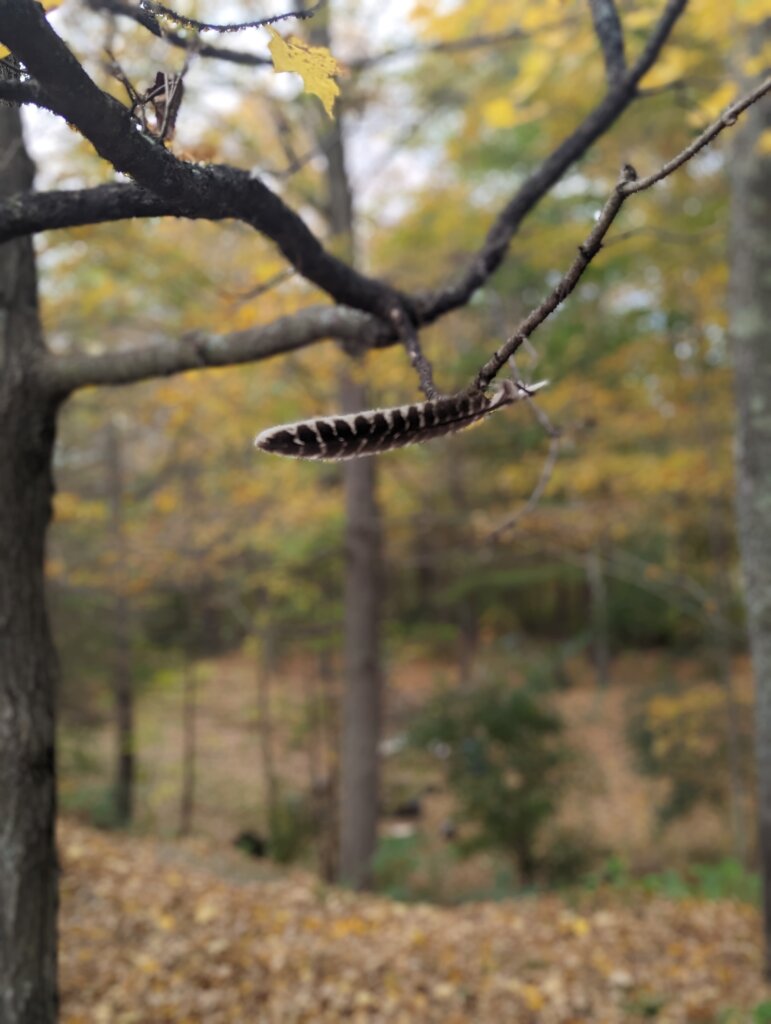
We were honored to welcome members of the Stockbridge-Munsee Band of the Muh-he-con-ne-ok (Mohican Nation) Shawn Stevens and Shannon Chada back to their Homelands from their current-day reservation in Wisconsin, for our school celebration on Tuesday.
Mr. Stevens, also known as Standing Eagle, visited the school for the first time last year. He and Ms. Chada were visibly touched by the turkey feathers—hung knee-high by our youngest students—welcoming them along the path beside the native “sumac forest,” near the Nursery play yard. (Sumac is a treasured Mohican medicine plant.)
Fire Circles – The Original Classroom
This year, Mr. Stevens brought traditional flute and drum songs to Early Childhood students, plus a humorous story. (Kindergartners can tell you the story of “How the Bear Lost Its Tail”—that tricky fox!)
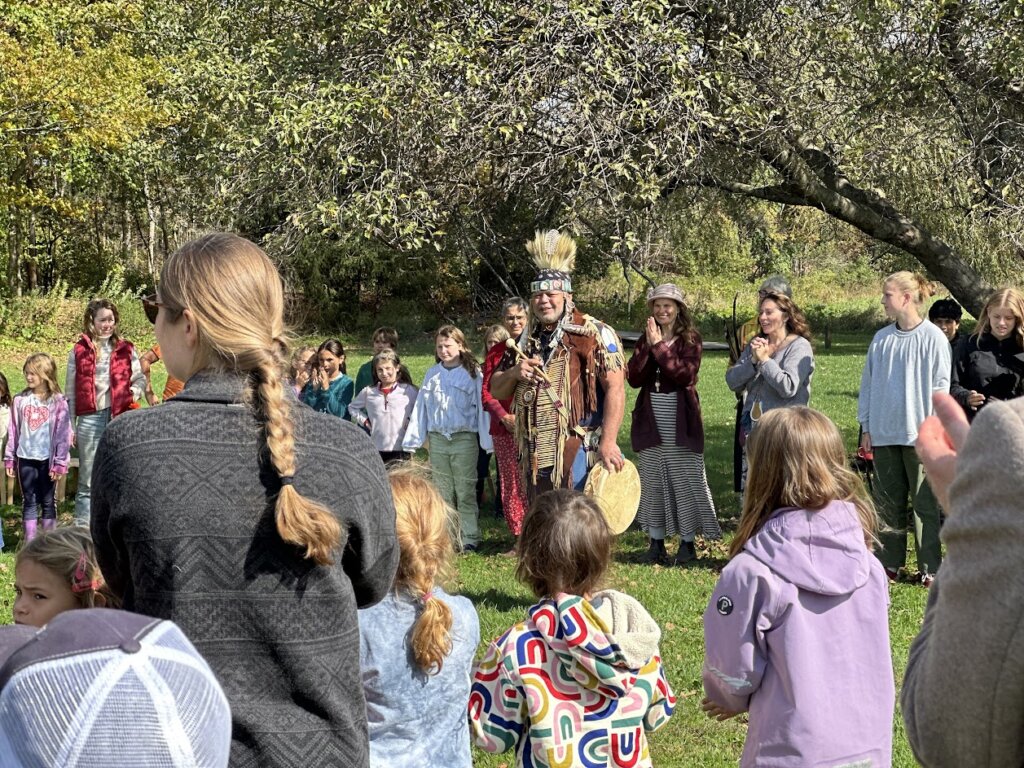
Around the fire with First through Eighth Graders, Mr. Stevens spoke about many aspects of Mohican culture that resonated with topics our students are already learning about, such as how Mohican family groups lived in longhouses, all along the Mahicannituck (Hudson River), and east to the Housatonic. Mr. Stevens described how warriors (“those with big hearts”) went out in their canoes to meet Henry Hudson when he came up the river; at that time, the Muh-he-con-ne-ok had already lived along its banks for thousands of years.
Mr. Stevens discussed how many Nations in our Eastern Woodlands region are relatives, springing from the original Algonquian language group, and had disbursed as far as the Great Lakes and the Carolinas, in order to share available resources. For this reason, he noted, the name Muh-he-con-ne-ok designates “where we’re from” more than “who we are.” It translates approximately to “People of the Great Tidal River.”
What We Learned
Eighth Graders reflected on the ways of thinking that Mr. Stevens discussed in the circle. Here are a few of their takeaways:
“We are all family. We are all the same species, and all come from the same place (Earth). If we could really realize this, we could end war forever.”
“My shirt is made of thread, woven into cloth to keep warm, but it doesn’t mean anything; it’s a thing. Mr. Shawn was saying every thread and bead and stitch of his sash was woven with good intentions and prayers. Imagine how that feels.”
“The tribes of North America, just like the tribes of Africa, aren’t generic, but distinct Nations, with their own languages and cultures and ways of life.”
Onewe! Thank you for teaching us!
Click the button below to see more pictures of the Great Barrington town ceremony and walk on Monday. We are so grateful to see our students carrying the banner for Indigenous Peoples’ Day.
We remember that we are gathering and learning on the sacred, unceded Homeland of the Muh-he-con-ne-ok, the People of the Waters That are Never Still, who are now living and thriving in Wisconsin and the Berkshires.
Giving Thanks
Now our minds are one.
For the first time in many months, our community gathered this week to give thanks, for the earth and the Muhhekunneuw (Muh-he-con-ok) elders and land keepers who have lived in balance and unity for 10,000 years on the sacred land on which we learn together.
Now called the Stockbridge-Munsee Band of the Mohican Nation, the first nations people of our region are alive and well in Wisconsin, and are returning to their homeland. We strive to live in relationship, respect and shared values with their community. To do that, we open our hearts and turn our minds toward listening.
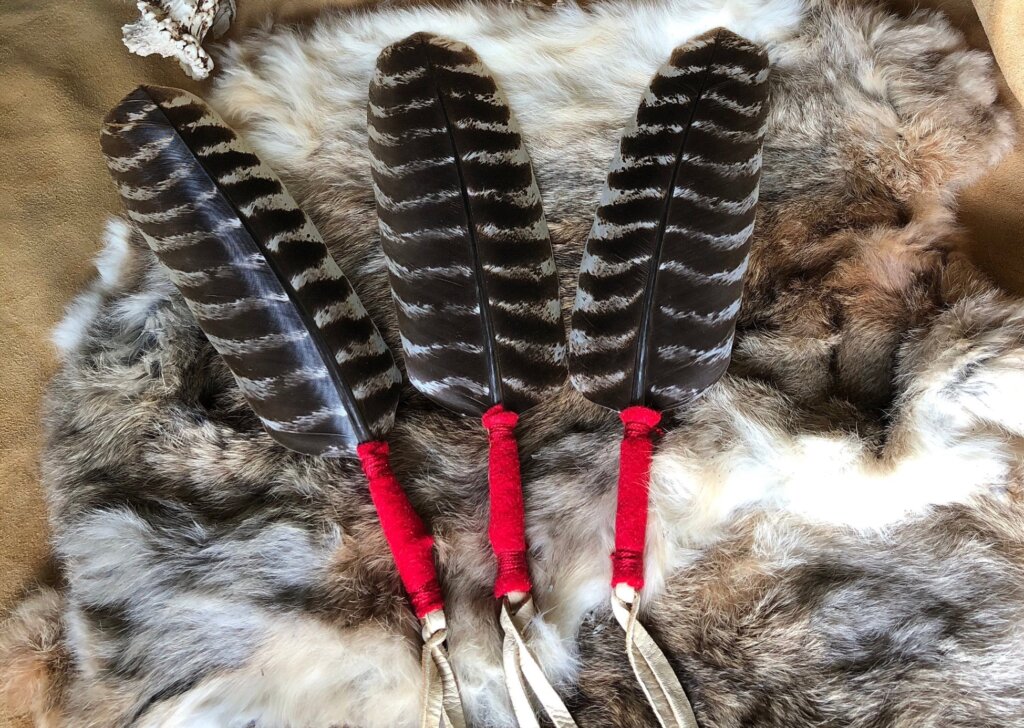
Living Stories
At the assembly, each of the grades classes shared a little of what they have been learning during Fall term. Waldorf teachers bring all they teach to the children through story. When BWS adapted Waldorf education for COVID times, much of our learning went outside. Starting in November, when temperatures dip below freezing, we light a fire every morning for outside classes. Hearing stories around the fire is ancient learning technology, both essentially human and unforgettable.
Second grade has been learning stories from the Muh-he-con-ne-ok (Mohican, now known as the Stockbridge-Munsee community) and the Haudenosaunee (Iroquois Confederacy). Our teachers feel strongly that Berkshire Waldorf students should learn the stories native to this land, before extending out to stories of cultures across the world, putting these stories at the center of the here and now.
Haudenosaunee Thanksgiving Address
Third grade has also been learning from the Haudenosaunee. At the assembly, they recited a portion of the Haudenosaunee Thanksgiving Address.
Today we have gathered and we see that the cycles of life continue. We have been given the duty and responsibility to live in balance and harmony with each other and all living things. So now, we bring our minds together as one, as we give our greetings and our thanks to one another as people.
It’s important to know that the Haudenosaunee thanksgiving is not a once-a-year event. Just as the Haudenosaunee do, Waldorf students and teachers begin their days with a blessing, preparing to work together and do their best, and building collective strength in this way.
Many of the grades hung turkey feathers in the apple trees in the big backyard – each feather a blessing of gratitude. These are ways to begin to reclaim the meaning of Thanksgiving. Seventh grade smudged with sage around their fire, to purify seeing, hearing, speaking, hearts and minds. These actions are the beginning of reframing Thanksgiving in our diverse community.
We are Grateful
So you might be wondering, What do I tell my children about Thanksgiving?
To reiterate from our blog post last year, start with learning together about Thanksgiving and ways to practice gratitude from Indian writers and storytellers. Learn about food sovereignty, and consider adding diversity to your celebration with a dish that includes rich indigenous flavors like corn, beans and squash. More learning resources are listed below.
As adults, learn that not everyone is feasting and celebrating; indigenous people, especially in New England – especially in Massachusetts – are fasting, and meeting at Plymouth Rock to hold this day as a National Day of Mourning.
While it’s important that parents know and acknowledge the truth of history, fourth grade teacher Victoria Cartier points out that you will want to tune what you say to your child’s age and development.
For example, with early childhood students, the focus is on making food and saying a blessing for all the good gifts of the earth.
“And I would add, give gratitude to nature,” Pumpkin Patch Kindergarten teacher and Pedagogical Lead Christianna Riley suggests. “Take walks in nature, be in wonder together and admire its beauty. Young children are so good at finding ordinary rocks or sticks as beautiful and special treasures. We can learn from them.”
With third graders, Ms. Cartier says she would emphasize generosity, working together for the good of all, and gratitude. In eighth grade, children are ready for and seek the truth, and that’s a time to share more details. In high school, students will want to act for justice.
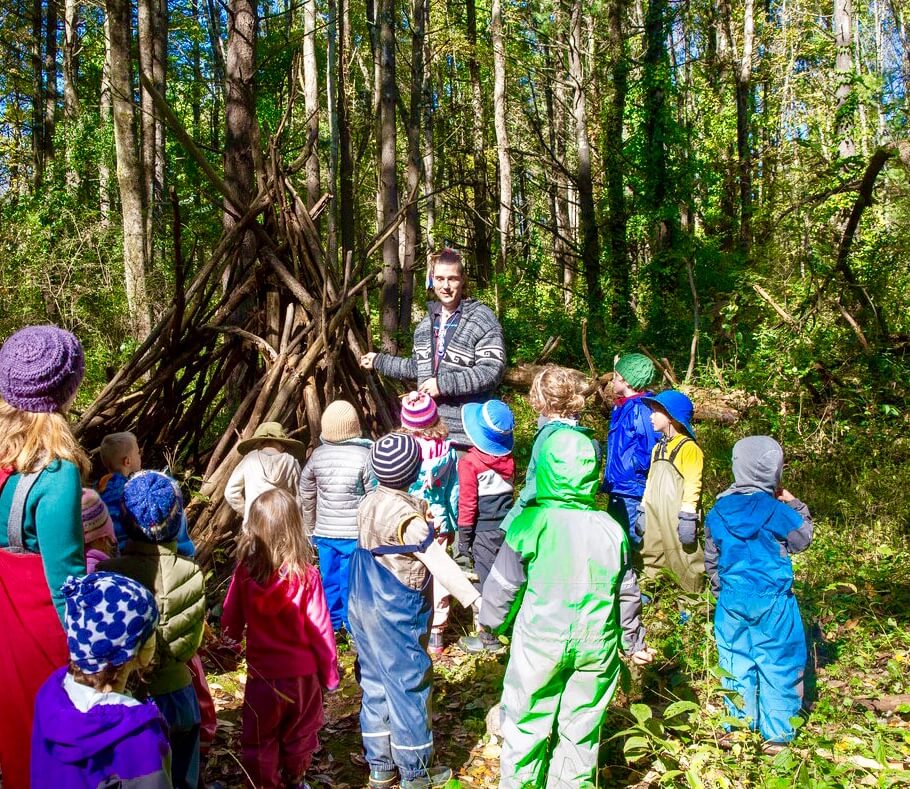
More Resources:
Haudenosaunee Thanksgiving Address:
americanyawp.com/reader/british-north-america/haudenosaunee-thanksgiving-address
Learn more about the true story of Thanksgiving:
https://berkshirewaldorfschool.org/rethinking-thanksgiving/
Visit Berkshire Museum (through 1/9/22) to learn more about the past, present and future of the Mohican Nation:
http://berkshiremuseum.org/portfolio-item/muh-he-con-ne-ok
What you can do now to promote healing:
First Nations Day
We humbly and gratefully acknowledge that our school is learning and gathering in the unceded homelands of the Muhheconeew (Moh-He-Con-Nuck, or Mohican) Nation, who are the indigenous people of this land. Despite the tremendous hardship of being forced from their ancestral home, today their community resides in Wisconsin and is known as the Stockbridge-Munsee Community.
We also honor the elders and land keepers, past and present, of First Nations in the four directions, including Schaghticoke and Lenape to the south, Nipmuc, Wampanoag and Massachuset to the east, Abenaki and Algonquin to the north, and Haudenosaunee to the west.
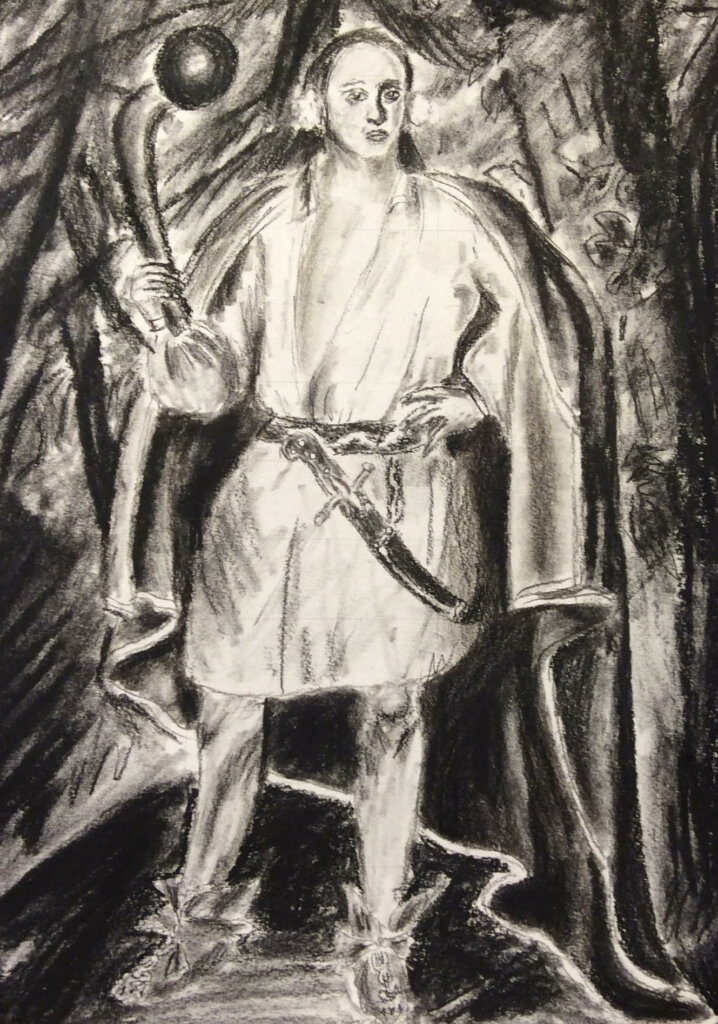
There are many celebrations and opportunities in the Berkshires this month to learn more about the First Nations of this sacred land.
Indigenous Peoples’ Day in Great Barrington
Drumming, traditional Native American songs, speeches, and a procession culminating in a ceremonial blessing of the Housatonic River will mark the local observance of Indigenous Peoples’ Day in Great Barrington on Monday, October 11. For details and to register, visit www.allianceforaviablefuture.org
First Nations Day at BWS
We’ll light the fires for First Nations Day, Tuesday, October 12, when Abenaki children’s book author, editor and storyteller Joseph Bruchac visits our school to share Northeastern indigenous nations’ stories, songs and drumming. You can find the extensive list of Dr. Bruchac’s books and stories here, and copies of many of them in the Mason and Ramsdell libraries, as well as at Bookloft and other local bookstores.
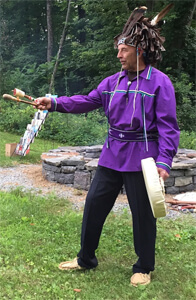
“We once called this land home, and while forced removal may have physically moved us, our hearts remain.”
-from the Berkshire Museum Exhibit Muh-he-con-ne-ok: People of the waters that are never still
Berkshire Museum
Muh-he-con-ne-ok: The People of the Waters That Are Never Still showcases the story of the Stockbridge-Munsee Communities past, present, and future.
Stockbridge Mission House and Walking Tour
Stockbridge Mission House now hosts a Stockbridge-Munsee Community-curated Mohican Exhibit.
And stroll through Mohican History with this Walking Tour of Main Street, Stockbridge, MA.
Stockbridge-Munsee Archeological Dig
The Mohican Tribal Historic Preservation Office conducted archaeological digs at “Indiantown”—now known as Stockbridge—this summer, to try and locate the 1739 meetinghouse site and the site of the ox roast that George Washington ordered there in honor of Mohican soldiers, in gratitude for their support, at the end of the Revolutionary War.
Sheffield Historical Society – “The Mohican Journey: Homelands, History, and Hope”
The Stockbridge-Munsee Band of Mohicans has worked for decades in research, preservation, education, and governance to promote equality and programs that strengthen their culture and community heritage. Making connections to their ancestral homelands continues to be of sacred value. This exhibit combines a variety of art forms, artifacts, audio and video elements, including content from Dorothy David’s “A Brief History of the Mohican Nation” as well as many personal narratives. Outdoor exhibit on view through Oct 11, weekends 11a-4p and Indigenous Peoples Day, Monday, Oct 11.
First Nations Books
Elder-approved books from the Stockbridge-Munsee Arvid E. Miller Library:
- The Mohicans of Stockbridge by Patrick Frasier
- The Mohican World: 1680-1750 by Shirley W. Dunn
- Stockbridge Past and Present by Electa Jones (contains an oral history of the Mohicans from the mid-1700s)
- Medicine Generations by Misty Cook (medicine plants of the homelands, aka the Berkshires)
- The Arvid E. Miller Library also has great stickers of the Stockbridge-Munsee logo, “Many Trails,” symbolizing endurance, strength and hope.
Forge Foundation
The Forge Foundation, located in the Mohican homeland near Hudson, NY, has launched an indigenous fellowship program to support the work of indigenous artists and activists.
Papscanee Island in the Muhheakantuck (Hudson) River
Read the amazing “land-back” account of how this island in the Hudson River – with a preserve that remains untouched since 1609 – has been returned to its original owners, the Mohican Nation, and you can visit it.
The aim [of this year’s Indigenous Peoples’ Day events in Great Barrington] is to “acknowledge and heal the wounds of our past, honor the Native American ethic of respect and care for the natural world, and integrate indigenous values into our response to climate change.”
– Alliance for a Viable Future
Lear More from the mohican.com website
STOCKBRIDGE-MUNSEE HISTORY VIRTUAL TALKS
-We are Mohican Nation Presentation for Stockbridge Munsee Day
-PBS: Stockbridge-Munsee Mohican History
-Footsteps of our Ancestors – Virtual Walking Tour of Stockbridge
-Finding A Place Again: Honoring the Mohican Story of Stockbridge with Bonney Hartley
-CTSB: 2018 Mohican History seminar & tribal elder Judy Putnam Hartley talk
-History Presentation for NY Fish and Wildlife service in 2015
-Williamstown – Living on Mohican Homelands
“Long Journey Home” Story Map on Stockbridge-Munsee effort to reclaim Papscanee Island
-Homelands History Series from the Arvid E. Miller Memorial Library Museum
OTHER RELATED TALKS
-Decolonizing Language: In conversation with Heather Bruegl and Dr. Anne Leilehua Lanzilotti
-Perspectives in Archeological Collaboration
-The Power of Native Women with Heather Bruegl
Indigenous Histories:
-Roxanne Dunbar-Ortiz: An Indigenous Peoples’ History of the United States
-Jean Maria O’Brien: Firsting and Lasting: Writing Indians out of Existence in New England
-David Treuer: The Heartbeat of Wounded Knee
What do we celebrate when we celebrate Thanksgiving?
We are all so ready for some celebration. We have almost made it through the fall term, miss our friends and family, and long for a sense of normalcy, to help orient ourselves in this disorienting time.
How do we celebrate, when not everyone is celebrating? This year, we are truly thankful for another journey around the sun. To celebrate in the midst of so much loss, when the earth is calling for a time of introspection and healing, means holding our families close. From closeness comes comfort and calm.
Our community’s outpouring of generosity in this time of need, by actions such as giving food to the Peoples’ Pantry, is a start at widening the circle of love and support to our neighbors. Part of what we celebrate with sharing is that the Indians in what is now Plymouth, MA gave “essential survival knowledge to the Pilgrims and taught them how to cultivate the land, including teaching them which crops grew well, how to avoid dangerous and poisonous plants, and how to extract sap from maple trees.”
Do we see the mercy and the generosity of people who did not see the “other” as an enemy, but as a human being? Do you know what became of Ousamequin, know as Massasoit or great sachem (leader), and Tisquantum (Squanto), and how this generosity was repaid?
The “First Thanksgiving”
In a speech planned for the 350th anniversary of the Pilgrims’ landing at Plymouth rock in 1970, Wampanoag Wamsutta James wrote these remarks:
It is with mixed emotion that I stand here to share my thoughts. This is a time of celebration for you—celebrating an anniversary of a beginning for the white man in America. A time of looking back, of reflection. It is with a heavy heart that I look back upon what happened to my People.
Even before the Pilgrims landed it was common practice for explorers to capture Indians, take them to Europe and sell them as slaves for 220 shillings apiece. The Pilgrims had hardly explored the shores of Cape Cod for four days before they had robbed the graves of my ancestors and stolen their corn and beans. Mourt’s Relation describes a searching party of sixteen men. Mourt goes on to say that this party took as much of the Indians’ winter provisions as they were able to carry.
Massasoit, the great Sachem of the Wampanoag, knew these facts, yet he and his People welcomed and befriended the settlers of the Plymouth Plantation. Perhaps he did this because his Tribe had been depleted by an epidemic. Or his knowledge of the harsh oncoming winter was the reason for his peaceful acceptance of these acts. This action by Massasoit was perhaps our biggest mistake. We, the Wampanoag, welcomed you, the white man, with open arms, little knowing that it was the beginning of the end; that before 50 years were to pass, the Wampanoag would no longer be a free people.
National Day of Mourning
Instead, James was not allowed to speak these words. Since the year his speech was suppressed, this day has marked a National Day of Mourning. Moonanum James and Mahtowin Munro explain:
Every year since 1970, United American Indians of New England have organized the National Day of Mourning observance in Plymouth at noon on Thanksgiving Day. Every year, hundreds of Native people and our supporters from all four directions join us. Every year, including this year, Native people from throughout the Americas will speak the truth about our history and about current issues and struggles we are involved in.
Why do hundreds of people stand out in the cold rather than sit home eating turkey and watching football? Do we have something against a harvest festival?
Of course not. But Thanksgiving in this country—and in particular in Plymouth—is much more than a harvest home festival. It is a celebration of the Pilgrim mythology.
According to this mythology, the pilgrims arrived, the Native people fed them and welcomed them, the Indians promptly faded into the background, and everyone lived happily ever after.
The truth is a sharp contrast to that mythology.
Telling the Story is Teaching the Story
In eighth grade American history, our students learn about Revolution—the French Revolution, American Revolution, French and Indian Wars, the so-called Beaver Wars, and the Industrial Revolution. To the victor go the spoils. The victors also control the story, which includes the stories in children’s books and textbooks.
So consider the story of the “First Thanksgiving” as just that, a story—the New York times recently called it a myth. American Indian Movement activist Russell Means called Thanksgiving “Thankstaking.” He also points out that there were many feasts in Plymouth when the Indians shared food with their starving neighbors, but that the first “official” Thanksgiving Governor William Bradford declared was in gratitude for the massacre of an Indian village. Even Parenting Magazine writes, “Thanksgiving signifies a whitewashing of history, and an attempt to deflect from the atrocious harm caused to indigenous groups by European settlers.”
True History of U.S. (Us)
On First Nations Day this year, Pumpkin Patch kindergarten teacher and member of the BWS Diversity, Equity and Inclusivity (DEI) Committee Christianna Riley visited the New England Peace Pagoda. She writes:
I had the great privilege of being invited to the New England Peace Pagoda’s 35th Inauguration Ceremony (socially distanced and responsible). I am including the link to a livestream that was taken. This is for parents only. The part I would like to share with you begins around 48 minutes into the livestream, a beautiful song and then a speech given by Sonia Little of the Mashpee Wampanoag Nation, located in what we now call Cape Cod, Mass. Sonia is the granddaughter of the late Supreme Medicine Man of the Wampanoag People, Slow Turtle. She gives a heartbreaking, clear and concise truth about the history of the USA and the First Nations of Turtle Island. I believe that hearing Sonia speak is a deed of great courage. This is the history of the USA and of Humanity. We are all related and connected. This is an offering to raise our awareness and to know history so that we can make a better future for our children and the Earth.
We are Grateful
So you might be wondering, What do I tell my children about Thanksgiving?
Start with learning about Thanksgiving and ways to practice gratitude from Indian writers and storytellers. Learn about food sovereignty, and consider adding diversity to your celebration with a dish that includes rich indigenous flavors like corn, beans and squash. Some resources are listed below.
While it’s important that parents know and listen to the truth of history, third grade teacher Victoria Cartier points out that you will want to tune what you say to your children’s age and development. For example, with early childhood students, the focus is on making the food and saying a blessing for all the good gifts of the earth. “And I would add gratitude to nature,” Mrs. Riley suggests. “Taking walks in nature, being in wonder and admiring its beauty. Young children are so good at finding ordinary rocks or sticks as beautiful and special treasures. We can learn from them.” With third graders, Ms. Cartier says she would emphasize generosity, working together for the good of all, and gratitude. In eighth grade, children are ready for and seek the truth, and that’s a time to share more details. In high school, students will want to act for justice.
Making Space for Listening
Some believe that the world will not heal until the earth can heal, and that in order to restore health, nations who have been “removed” must return to their sacred homelands. The water protectors, as you know, stood at Standing Rock for all of us—people and animals alike. The Lenape, who traded Manhattan for trinkets because they couldn’t conceive of selling the earth, are beginning to return to New York, working to teach what they know to save the earth for all. Once again, we are hungry in so many ways, and winter is approaching. Can we listen, and return generosity and mercy with respect and dignity? Can we change the end of the story this time, so all life can flourish? Let our celebration be a commitment to hearing all voices, leaving a space for silence so we can hear what the world is asking of us.
Some Resources:
We Are Grateful: Otsaliheliga by Traci Sorell
Squanto’s Journey: The Story of the First Thanksgiving by Joseph Bruchac
1621: A New Look at Thanksgiving by Catherine O’Neill Grace
The Thanksgiving Myth Gets a Deeper Look This Year
How to Celebrate Native Americans This Thanksgiving
Listen to Indigenous American Podcasts
Cook 10 Essential Indigenous Foods with The Sioux Chef
Faces of the Lenape Tribe, the Original Inhabitants of Manhattan
Massasoit’s Strategic Diplomacy Kept Peace With the Pilgrims for Decades







